Introduction
The Magic of Theatre and Stage: For thousands of years, theater and the stage have been an essential component of the culture of humanity. The performing arts have captivated audiences and made a lasting influence on the globe, from classical Greek play to contemporary Broadway musicals. In this post, we’ll go further into the intriguing world of theater and stage and examine the development, variety, and significance of performing arts.
Table of Contents
What is Theatre?
The art of theater entails producing live performances for an audience. It frequently consists of verbal discussion, singing, dancing, and acting. Theatre may take many different forms, from conventional plays to cutting-edge productions that mix truth and fantasy. Storytelling, emotional expression, and creating a memorable, immersive experience for the audience are the three main objectives of theatre. Theatre has been a significant element of human culture for hundreds of years and has the power to inspire, educate, and amuse people of all ages and socioeconomic backgrounds.
What is Stage?
The specified area where the performers perform and the action occurs is frequently referred to as the stage in theatre and performance. A thrust stage extends into the crowd, a typical proscenium stage has a huge, framed aperture separating the actors from the audience, or a black box stage can be set up in a number of different ways. Every theatre production needs a stage because it gives the performers a place to act, the set designers a place to build sets, and the audience a place to watch the performance. It frequently has special demands that are met by its design and decoration, which has a significant impact on the performance’s overall impact.
History of Theatre and Stage
Ancient Greece is where theater and the stage first appeared, when the art form was utilized to celebrate the gods and recount heroic and legendary tales. Aeschylus, Sophocles, and Euripides wrote the first plays that were ever recorded, and their plays are being performed today.
Comedy, tragedy, and farce are some of the various forms that theatre on the stage have taken over time. Acrobats, jugglers, and other itinerant artists provided crowds with entertainment during the Middle Ages. Classical Greek and Roman drama saw a rebirth of popularity during the Renaissance, while melodrama and the contemporary musical were born throughout the 18th and 19th centuries.
Theatre and stage performances of all sizes, from tiny one-act plays to lavish musicals with complex sets and spectacular effects, are still produced today.
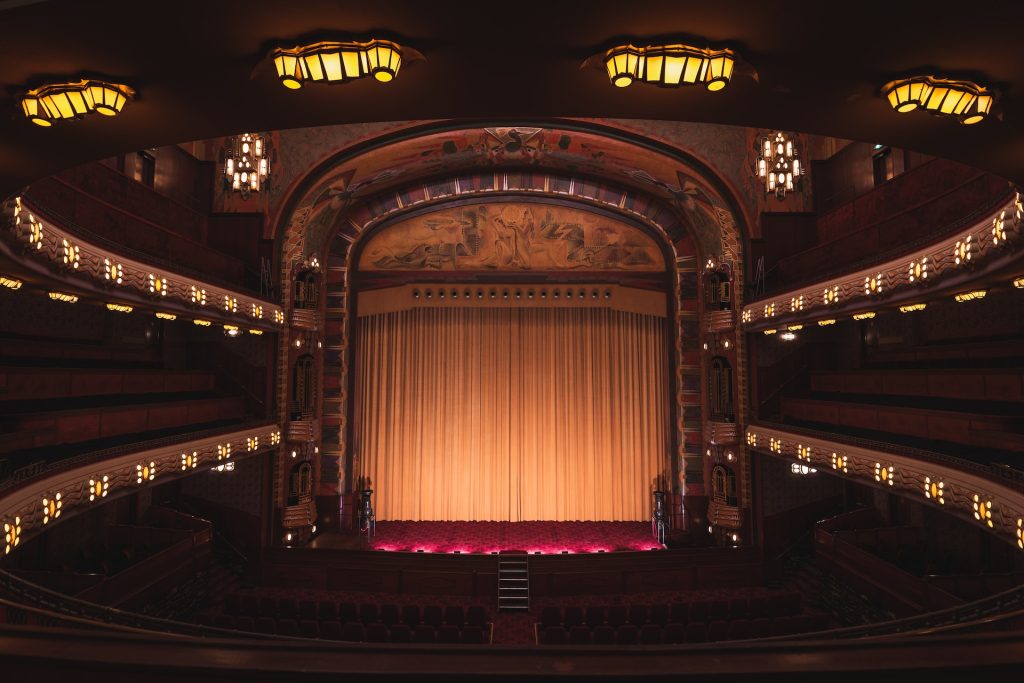
Top 15 Great English Plays Of All Time: Ultimate English Theatre Plays
There are many different cultures and customs represented in the long history of theater on the stage. Here is a brief summary
Ancient Origins:
- The history of theater may be traced back to the ancient Greeks, who incorporated it into their sacred celebrations of Dionysus.
- Greek plays by prominent playwrights like Aeschylus, Sophocles, and Euripides were performed in outdoor amphitheaters.
Roman Influence:
- Greek theater was modified by the Romans, who also added more intricate sets and architectural elements like the proscenium arch and higher stage.
- Comedies, tragedies, and pantomimes were often performed at indoor Roman theaters.
Medieval and Renaissance theater:
- In churches or public spaces as part of religious pageants, theater began to focus more on religious themes during the Middle Ages.
- With the rise of well-known writers like Molière in France and William Shakespeare in England, the Renaissance saw a resurrection of classical theater.
Elizabethan Theater:
- Shakespearean theater reached its zenith during the Elizabethan era in England (late 16th century), with performances of his plays at venues like The Globe.
- Actors performed in lavish costumes in open-air amphitheaters with thrust stages.
Italian comedic theater:
- Commedia dell’arte, which had its beginnings in 16th-century Italy, included improvised performances by performers dressed as stock characters.
- Physical comedy, wit, and satire were prioritized, and it had an impact on European theater.
The 19th and 20th Centuries:
- The advent of realistic and naturalistic theater in the 19th century upended established theatrical norms.
- Stage technological advancements like motorized sets and gas lighting have completely changed the theatrical experience.
- Modern theatrical movements including expressionism, surrealism, and the avant-garde evolved.
Contemporary Theater:
- Modern theater is a reflection of various genres, techniques, and innovation.
- Stage productions are still being shaped by technology thanks to improvements in audio, lighting, and multimedia integration.
- A vast variety of plays, musicals, and performances are presented at regional theaters, Broadway, the West End, and other theater hotspots.
Theater has been a narrative, cultural expression, social commentary, and entertainment medium throughout history, adapting to accommodate the shifting tastes and requirements of audiences.
Top 15 Indian Plays Of All Time: Ultimate Indian Plays
Types of Stages
There are many various kinds of stages that can be used in theater and performances, and each one has certain characteristics and advantages. Several typical kinds of phases include:
Proscenium Stage:
The audience and stage are divided by a sizable, framed aperture known as a proscenium arch on this sort of stage, which is the most conventional. Large-scale performances like musicals and operas frequently employ this kind of stage.
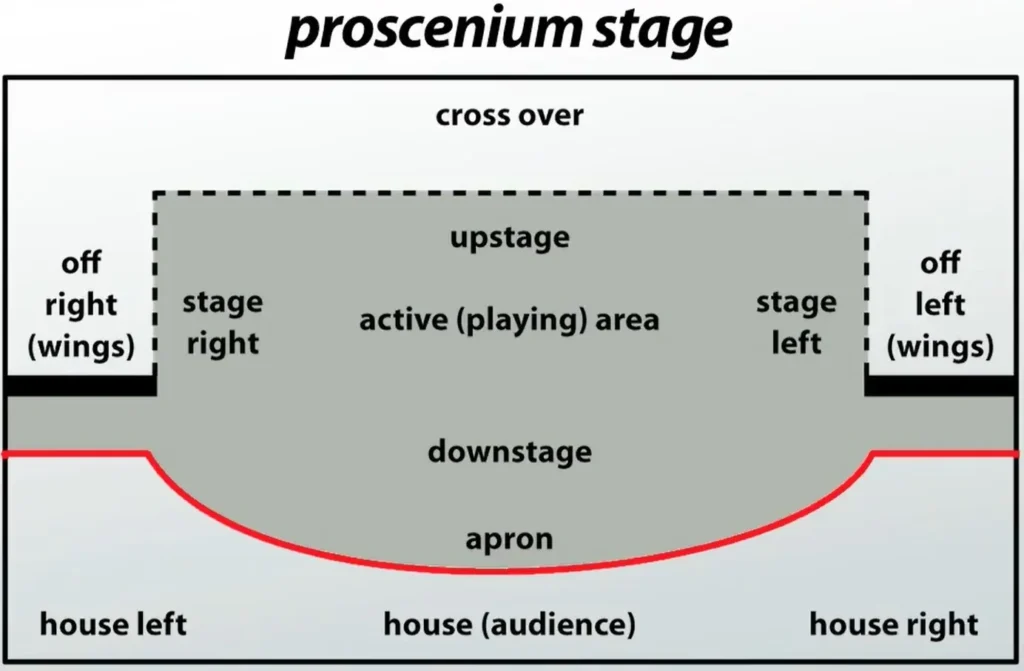
Thrust Stage:
Three sides of the performance area are filled with seats thanks to a thrust stage that extends into the crowd. This kind of stage provides a cozy atmosphere that makes it possible for the audience to feel closer to the artists.
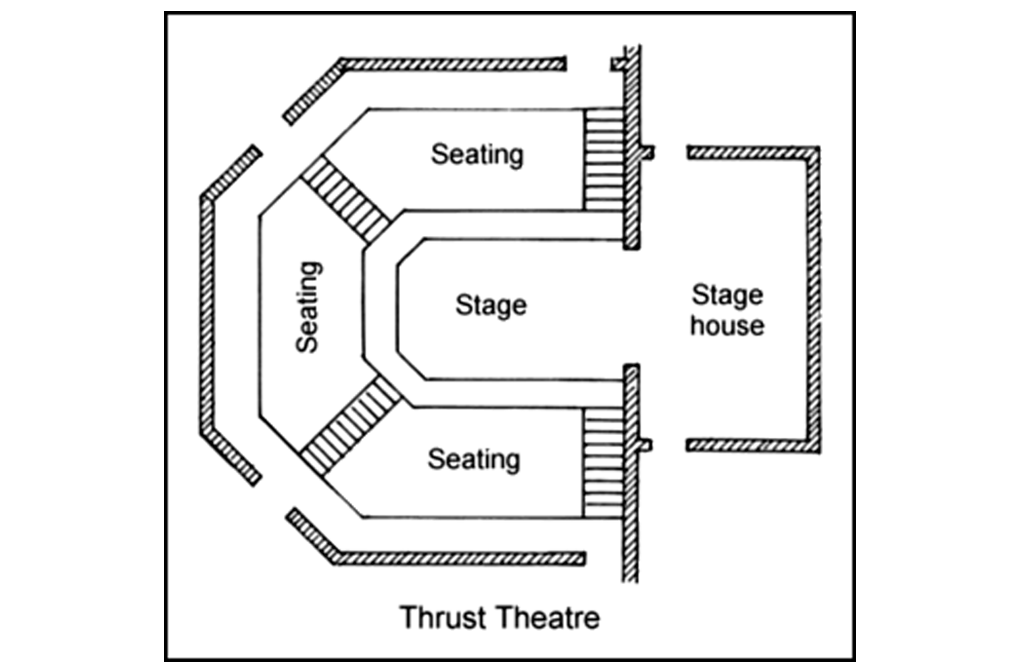
Arena Stage:
An arena stage is one that is entirely encircled by seats for the audience. This kind of stage is frequently utilized for avant-garde productions, immersive theatrical experiences, and shows that demand a lot from the audience.
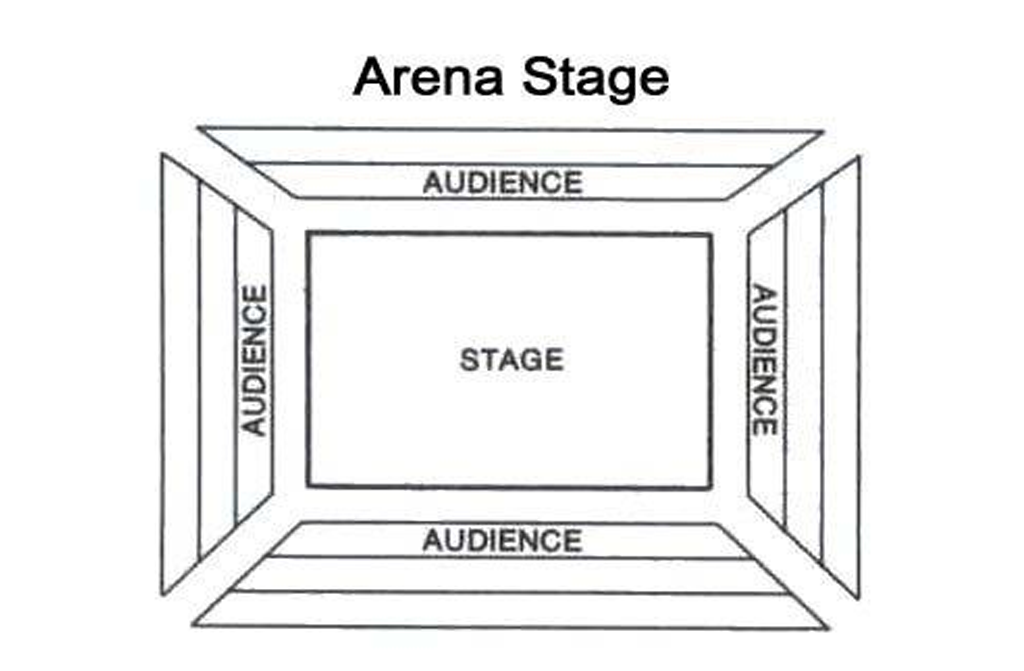
Black Box Stage:
Based on the demands of the production, a black box stage is a versatile performance area that may be set up in many ways. Small-scale plays, experimental shows, and private performances frequently take place on this kind of stage.
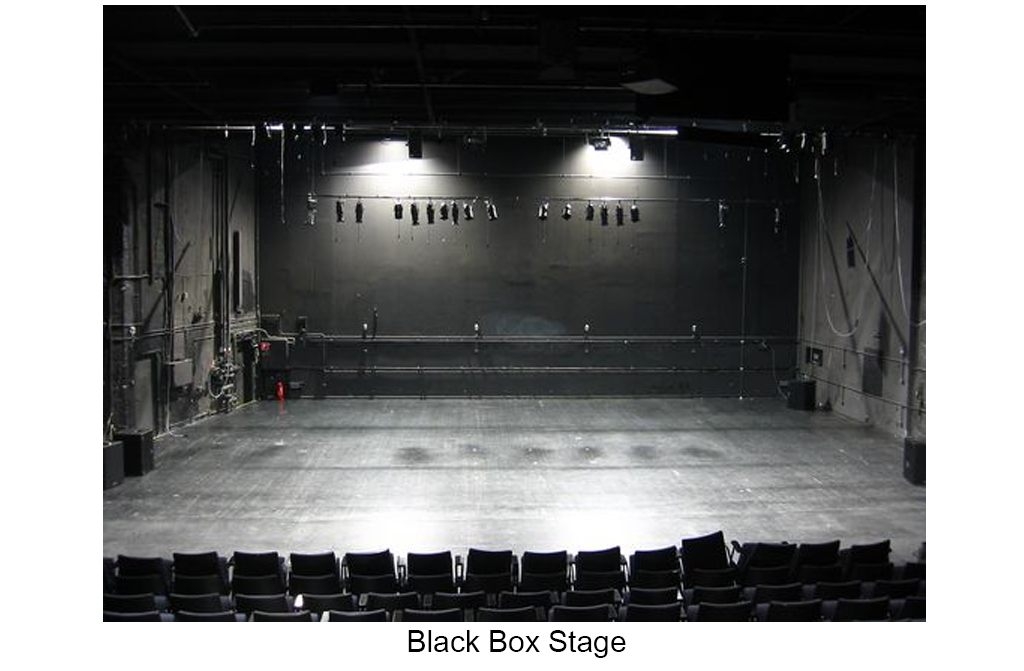
Outdoor Stage:
A performing area outside, usually in a park or other open area, is referred to as an outdoor stage. This kind of stage is frequently utilized for outdoor theatrical events, concerts, and festivals.
Site-Specific Stage:
A performance area that is especially created for a certain production or performance is known as a site-specific stage. This kind of stage is created to meet the unique requirements of the show and is frequently situated in an unconventional location, like a warehouse or abandoned building.
Platform Stage:
For small-scale plays or as a temporary stage for outdoor events, a platform stage is a straightforward, raised platform.
Traverse Stage:
A performance venue known as a traverse stage has the audience seating on either side of the stage. For immersive theater performances, where the action takes place in the middle of the audience, this kind of stage is frequently employed.
Hybrid Stage:
An innovative and adaptable performance environment that may be set up in many ways is created by combining features of several stage styles. This kind of stage is frequently utilized for innovative shows and performances that need a high level of adaptation and flexibility.
In addition to these sorts of stages, there are many additional special and specialty stages that are used in particular kinds of theatre and performances, as well as variants within each kind.
The Great English Playwrights: A Top Worldwide English Playwrights
Types of Theatre
There are several varieties of theater and stage, each with its own special features and aesthetic. The most typical varieties include:
Broadway:
One of the most well-known stages in the world is known for its spectacular musical shows. The Broadway neighborhood in New York City is home to several large-scale shows that draw spectators from all around the world.
Off-Broadway:
Off-Broadway shows are similar to Broadway in that they often have a lower size and budget. They frequently present both new and avant-garde works as well as revivals of well-known plays.
Regional Theater:
Regional theaters, which are found outside of New York City, provide a wider variety of plays. They are a fantastic opportunity to explore theater outside of the major cities because they frequently focus on new works and up-and-coming writers.
Community Theater:
Community theaters are managed by volunteers and are not for profit enterprises. They frequently stage intimate shows that give nearby authors, directors, and actors a chance to demonstrate their abilities.
Experimental theater:
Experimental theatre is a genre of performance art that questions conventional theater and stage conventions. To produce a distinctive and engaging experience, it frequently combines multimedia components, audience engagement, and innovative staging.
The Great Playwrights In India: Top Indian Playwrights
Importance of Theatre and Stage
Both as a form of entertainment and as a platform for the expression of significant concepts and subjects, theater and stage play a significant role in our culture. Theatre and stage are significant for the following reasons:
Cultural Preservation:
We may learn from the past and develop a greater understanding of other cultures thanks to the theatre and stage, which assist to preserve cultural traditions and storytelling.
Education:
Students may learn about history, literature, and social concerns via theater and stage performances. They encourage pupils to think critically, be creative, and communicate effectively while also fostering empathy and understanding of others.
Entertainment:
We may escape from our everyday lives and immerse ourselves in other worlds and experiences through theatre and stage performances, which offer a distinctive type of entertainment.
Social Analysis:
Numerous plays and performances touch on significant social and political concerns, igniting debate and bringing crucial subjects to light.
Emotional Impact:
Audiences can experience a range of powerful emotions when seeing theater and performances, from tears to laughs. They can aid in our understanding of who we are and the environment we live in.
FAQs about Theatre and Stage
Question 1): What skills do you need to work in theatre and stage?
Answer: Working in theatre and stage requires a variety of skills, including acting, directing, writing, design, technical production, and more. Good communication, creativity, and collaboration skills are also important.
Question 2): What is the difference between theatre and stage?
Answer: Theatre refers to the art form of creating live performances, while stage refers to the physical space where the performance takes place.
Question 3): How long has theatre and stage been around?
Answer: Theatre and stage have been around for thousands of years, with origins in ancient Greece.
Question 4): Why is theatre and stage important?
Answer: Theatre and stage are important for cultural preservation, education, entertainment, social commentary, and emotional impact.
Conclusion
The theater and stage are significant components of human civilization because they offer a distinctive kind of entertainment, education, and social criticism. The performing arts have captivated audiences for centuries, from classical Greek play to contemporary Broadway musicals, and they continue to have a profound impact on society. Theatre and stage have something to offer everyone, whether you’re a seasoned theatergoer or a novice to the world of performing arts.




Its like you read my mind! You appear to know a lot about this, like you wrote the book in it or something. I think that you could do with some pics to drive the message home a little bit, but instead of that, this is fantastic blog. An excellent read. I will certainly be back.
Simply desire to say your article is as surprising. The clearness in your post is simply excellent and i could assume you are an expert on this subject. Fine with your permission let me to grab your feed to keep up to date with forthcoming post. Thanks a million and please carry on the gratifying work.